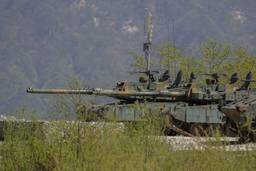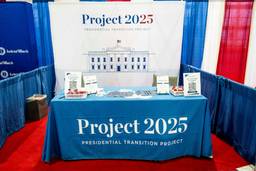George W. Bush came to Washington promising to change U.S.-China policy. He abandoned Clinton’s “strategic partnership,” replacing it with the adversarial definition of China as a “strategic competitor.” But in the wake of the spy plane incident – in which a Navy EP-3E surveillance aircraft collided with a Chinese air force jet killing the Chinese pilot and forcing the disabled U.S. plane and its 24-member crew to land at Chinese air base≠≠Bush’s China policy morphed into one of “strategic confrontation.”
But the administration is divided on the question of China. Secretary of State Colin Powell and National Security Adviser Condoleezza Rice take the moderate position, one held by the free-trade business and political elite, that any such incident must not be allowed to damage U.S.-China economic relations. (U.S. corporations have invested $25 billion in China in the past 20 years.) The administration’s retro cold warriors, particularly Vice President Dick Cheney, Secretary of Defense Donald Rumsfeld and Deputy Undersecretary of Defense Paul Wolfowitz, take the hard line favored by the Republican right in Congress.
Initially it was the hawks who appeared to be setting the tone of the U.S. response. “Now it is time for our [crew] to return home, and it is time for the Chinese government to return our plane,” said a belligerent Bush two days after the incident. When that proved counterproductive, Powell took center stage with talk of reconciliation and “regret.” Though the moderates appeared to carry the day, the cold warriors can now point to the spy plane incident as they ratchet up China as a threat to U.S. global dominance.
Making China our public enemy No. 1 plays into the hands of militarists on both sides of the Pacific. The incident, and resulting public furor in China≠≠not to mention the U.S. bombing of the Chinese Embassy in Belgrade≠≠has strengthened the hand of the Chinese generals. The United States is now perceived as presenting a clear and present danger to China’s honor, sovereignty and economic aspirations.
In the United States, the resurrected red menace will help the Pentagon garner congressional and public support for its soon-to-be released strategic review (see “The New Marshall Plan,” April 2). With China seen as a threat, the military can argue that we need National Missile Defense and its regionally deployed complement, the Theater Missile Defense – Star Wars schemes the strategic review is expected to hype.
U.S. foreign policy machinations already point in that direction. The administration quashed the rapprochement with North Korea. “If peace breaks out on the Korean Peninsula, the Pentagon looses a reason for missile defense,” says Robert Weill, an East Asian scholar.
Then there is Taiwan, which wants to buy U.S. destroyers equipped with high-tech AEGIS radar. That request, supported by congressional Republicans, will get a favorable hearing in an anti-China climate.
Hysteria about China certainly bodes well for the coffers of corporations like Lockheed Martin, where Powell Moore, assistant secretary of defense for legislative affairs, worked as a vice president. SPC International, a high-tech military contractor founded by Dov Zakheim, undersecretary of defense/comptroller, also stands to benefit. At a 1999 symposium at the National Defense University, Zakheim supported the deployment of a Theater Missile Defense in Taiwan, saying, “If Taiwan were able to obtain a TMD capability, it would effectively rob the mainland of its most effective tool for blackmail, and indeed, of its most credible threat to the island.”
“Strategic confrontation” also jives with the worldview of the RAND Corporation, where David Chu, undersecretary of defense for personnel and readiness, served as a vice president. RAND advocates a China policy that combines containment and engagement, a strategy it terms “congagement.” In other words, a lexical recipe for a new Cold War.
Joel Bleifuss, a former director of the Peace Studies Program at the University of Missouri-Columbia, is the editor & publisher of In These Times, where he has worked since October 1986.









